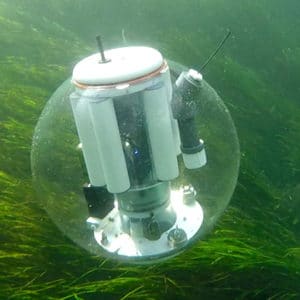 By Scott Ensign
By Scott Ensign
If you were offered a choice between a free bank account with $10 or $100, which would you choose? Hopefully before choosing you would ask what interest rate each receives and thereby how quickly that money would grow.
Stroud™ Water Research Center scientists ask a similar question about river algae: it’s not just how much algae that matters, it’s also how quickly it grows. This is a tough question to answer without taking the algae out of the river, so Marc Peipoch, Ph.D., is monitoring algae along the Brandywine River from Chadds Ford to Wilmington with underwater sensors that run 24/7.
 It turns out that algae are more abundant in the Brandywine following moderate rains when river flow sweeps algae off rocks on the river bottom.
It turns out that algae are more abundant in the Brandywine following moderate rains when river flow sweeps algae off rocks on the river bottom.
To measure how fast the algae grow while they are floating downstream, Peipoch, Scott Ensign, Ph.D., and Clara Mendoza-Lera, Ph.D., floated, along with the algae, for an afternoon in canoes.
Because canoes at the surface move faster than algae underneath, the trio followed an underwater drifter that kept pace with the algae floating below.
Like a floating laboratory, the canoe measured algae, the oxygen it produced, and the nitrate it used to grow.
By combining the rate of oxygen increase and nitrate decrease, Peipoch can measure the algal growth rate throughout the day. With these data, he can also determine when algal growth exceeds the demand from the Brandywine’s food web. This information can help regional water managers set restoration goals that improve the health of the Brandywine River.
The video below was filmed by the drifter as it floated down the Brandywine. More drifter footage can be seen in the video abstract for a new journal article co-authored by Ensign.



